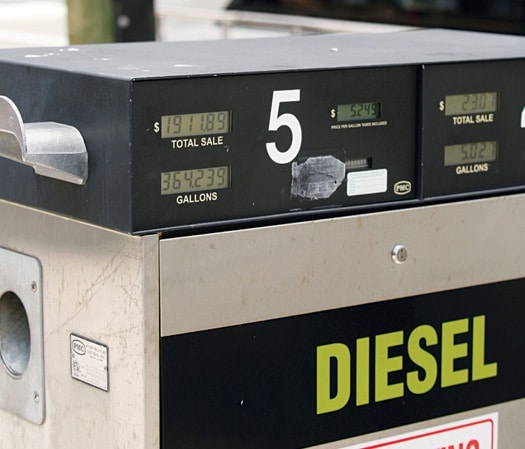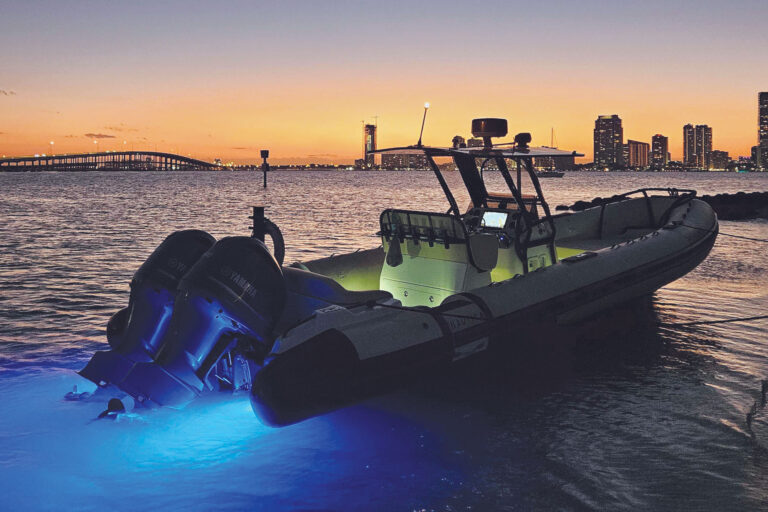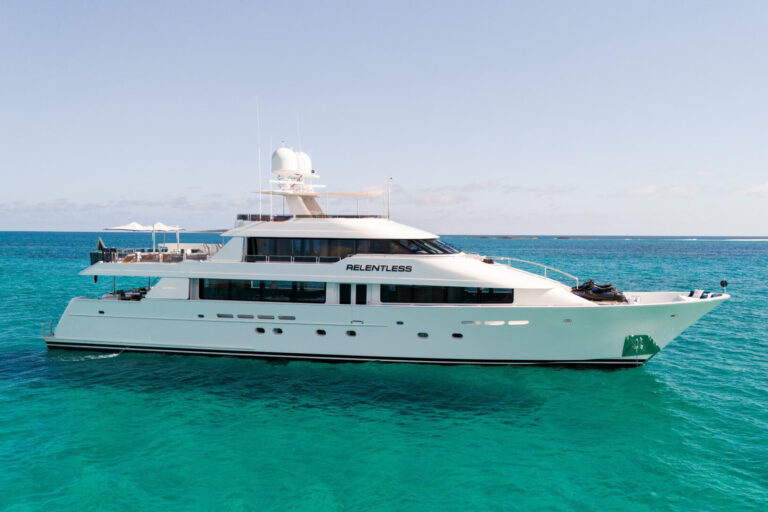
fuel1.jpg
Fuel prices headed toward double-digit dollars have gotten the attention of even the most dedicated yachtsmen among us, and as the costs continue to escalate, the more I hear disturbing talk about folks getting out of boating altogether. Whoa there, Bucko! Before you give up the ship, let’s take a realistic look at the situation and what you can do to ease the pain.
To start, understand that it’s a matter of proportions. The larger the yacht, the lower the fuel costs are as a percentage of overall operating expenses. For a superyacht with a captain, crew, and a professional manager, a slip in Antibes and another in the Caribbean, catered parties, and lots of ongoing upkeep, fuel-even at double or triple the price-is a secondary matter in the big picture. For those who are using a gas-guzzling truck to haul a 30-footer a couple hundred miles to the coast each weekend, it’s a more direct and painful concern. For the majority of Yachting readers who lie somewhere in the middle, it’s a problem, but a manageable one. Take a deep breath, calm down, and read on.
First, put your boat on a diet, because fuel usage is directly proportional to the weight of the fully loaded vessel. If you’re taking short day trips, you don’t need to run with full fuel and water tanks. Take aboard only what you need for the trip, plus a reasonable margin for weather and possible changes in your plans. Leave the spare props and shaft at home unless you’re cruising up the Amazon, and don’t carry a third storm anchor “just in case.” If you’re cruising the Bahamas, you don’t need enough chain to anchor in a fjord. Don’t carry oil for five oil changes, clothes for four seasons, or stores for three months. It’s hard to believe unless you’ve seen it as often as I have, but the average 60-footer being emptied for sale or refit will offload enough stuff to fill a 28-foot moving van.
Another easy solution for reducing fuel usage is simply to slow down, and it doesn’t need to be a lot to be effective. Not only does it allow you to enjoy the journey for a little longer, you’ll likely arrive more relaxed. In very general terms, power requirements, and thus fuel usage, vary as the square of the speed, so even a modest reduction in speed can have a noticeable effect on fuel burn. If you slow from 20 knots to 18, that’s a 10-percent reduction in speed but a 19 percent reduction in fuel usage (90% x 90% = 81%, and 100% – 81% = 19% savings). Slowing from 40 knots to 30 cuts the fuel usage by a whopping 44 percent (75% x 75% = 56%, and 100% – 56% = 44%).
If you’re looking at engine rpm, the effect is even more dramatic: The power varies as nearly the cube of the rpm, rather than the square. If you slow from 2000 rpm to 1800 rpm-again a 10-percent reduction-the drop in power, and thus fuel usage, is 27 percent (90% x 90% x 90% = 73%, and 100% – 73% = 27% savings).
Help yourself by keeping everything operating at peak efficiency. Clean your hull bottom regularly to reduce drag, and that’s equally important for underwater appendages: shafts, struts, stabilizer fins, transducers, and water intakes. Have your engines tuned regularly to get the most horsepower from each gallon of liquid gold, and don’t ignore the importance of what’s going into and out of your engine. Make sure you’re getting adequate air into the engineroom for clean combustion, adequate cooling (both air and water) for optimal fuel-burn rate, and make sure that your exhaust system is adequately sized to prevent excess back pressure, which robs power.
Operational efficiency also includes selecting the right speed for your yacht. At the middle of the speed range, somewhere between poking along at displacement speed and zooming to your destination at full planing speed, is the no-no area called hump speed. It’s here that you’ll run with the bow pointed toward the sky, pulling a tsunami behind you, and burning lots of fuel for very little return in speed. Don’t do it. Either run slow, with the hull in the water, or use full throttle to get the boat onto plane quickly and then back down to a moderate planing speed to conserve fuel. Trim tabs can also help to optimize your running trim angle, reducing fuel usage, once you find a speed you can live with.
It is especially important to remember that your propellers are the sole interface between your boat and the water when it comes to propulsion, and thus a significant determinant in how much fuel you’ll burn. The proper selection of propeller characteristics and gear ratio can easily make a 10-, 20- or even 30-percent difference in fuel consumption, based on inherent propulsive efficiency and other considerations such as cavitation. It’s worth having the engine, gear, and prop package evaluated by a professional, particularly when considering a new boat or thinking about repowering an existing one. Once you have the right propellers, keep them clean and in good repair.
And speaking of repowering, it’s not unusual for newer engine models to achieve up to a 10-percent improvement in fuel rate when compared to marine engines of 10 or 20 years ago. A “fuel map,” available for most engines, will reveal fuel burns of about 0.050 gallons per horsepower/hour for newer engines, and 0.055 gallons per horsepower/hour for older models.
Consider alternatives for getting your boat to its cruising grounds. If you’re trailering it, think about getting a slip or dry-storage berth at the coast. If your reality runs to cruising the Mediterranean or even the South Pacific, sending the yacht aboard a delivery ship will not only save on fuel costs, but wear and tear on your yacht and your crew alike.
Most yachtsmen move from smaller boats to larger ones as the years go by, but an evaluation of your current and future plans may indicate that downsizing a bit is a better choice for you, reducing not only fuel costs but other expenses as well. Chartering always remains an option when a larger yacht is required for a particular trip.
Finally, as one who survived the “gas crises” of the 1970s with a boat, there’s always the possibility of choosing a different type of craft for your waterborne excursions. Trawlers and sailboats have always enjoyed a surge in popularity during such times, and this time is likely to be no different. Only you can determine if that’s an attractive option for you. But what I don’t recommend is getting out of boating completely-giving up the ship should NOT be an option.
| Combustion CalculationsSquares and cubes help shape up your fuel burn. Generally speaking, slowing down cuts the fuel burn, but how you do it can make a big difference. Slowing down your speed by 10 percent, from 20 knots to 18 knots, will get you the following fuel-burn reduction, based on the square of your speed decrease. 90% indicates the speed you’re going now: 100% – 10% = 90% Another way to say 90% is 0.9. 0.9 x 0.9 = .81 or 81%, so 100% – 81% = 19% fuel-burn reduction. Or, if you reduce your cruising rpm by 10 percent, the fuel-burn benefit is derived from the cube. If you slow from 2000 rpm to 1800 rpm, again a 10-percent reduction, the drop in power, and thus fuel usage, 27 percent. 0.9 x 0.9 x 0.9 = 0.729 or 73%, so 100% – 73% = 27% fuel-burn reduction. |









